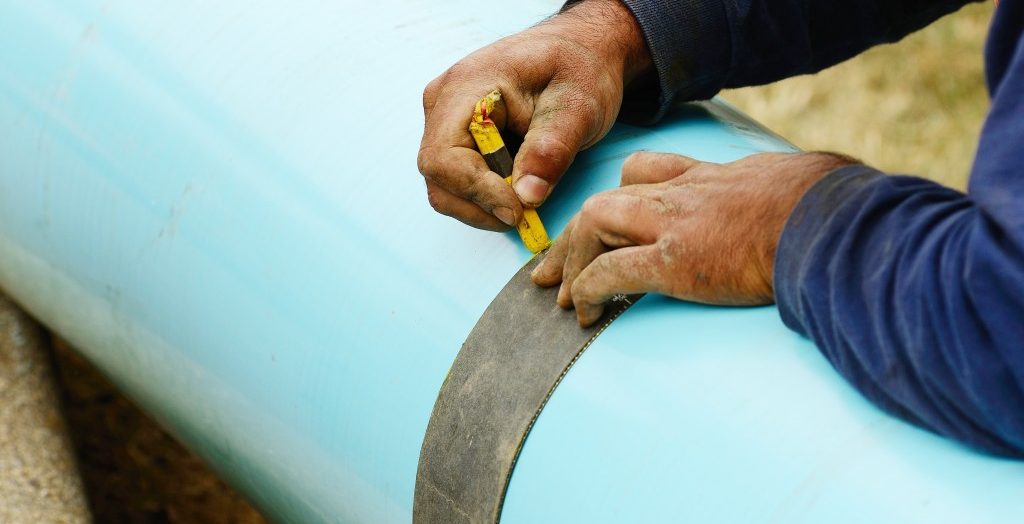Australian engineering feats such as the Sydney Harbour Bridge and Sydney Opera House are world-renowned. Other big Australian infrastructure projects include the Adelaide to Darwin railway, the Ord River irrigation dam and the gold mining Kalgoorlie Super Pit. These large and ambitious projects were preceded by an engineering project that was ahead of its time: the 330 mile Goldfields water supply scheme in Western Australia.
The Problem
In the late 1800s, the Western Australian population increased. One of the driving factors was a succession of gold rushes. The first, in 1887, was in the Yilgram region, half way between Perth and Kalgoorlie. Two others followed in close succession at nearby Coolgardie in 1892 and Kalgoorlie in 1893. The area is in the dry desert region of the state, and the water capacity of the area was unable to meet the demands of the booming population.
The Plan
An Irish engineer, C.Y. O’Connor, who had successfully completed Fremantle Harbour in Western Australia, provided a solution to the problem. He proposed pumping water from Perth to Kalgoorlie. The water would be drained from a dam near Mundaring Weir on the Helena River, and pumped in eight stages to the Mount Charlotte Reservoir in Kalgoorlie. The pipeline would include 330 miles of pipe and eight pumping stations, and provide five million gallons (23,000 m3) per day. From Kalgoorlie, the water would be distributed to mining towns and sites throughout the Goldfields.
In July 1896, John Forrest, a local politician, presented a bill in the WA Parliament to authorise raising a loan of £2.5 million to pay for the scheme. Despite much opposition, the funding was agreed.
The Implementation
 The workers involved in laying the pipeline and constructing the pump stations had to compete against desert heat and the spread of disease. O’Connor also had to deal with bureaucratic incompetence and allegations of mismanagement and corruption. The pipeline was completed in five years and caused O’Connor to commit suicide.
The workers involved in laying the pipeline and constructing the pump stations had to compete against desert heat and the spread of disease. O’Connor also had to deal with bureaucratic incompetence and allegations of mismanagement and corruption. The pipeline was completed in five years and caused O’Connor to commit suicide.
The project was innovative. Six thousand pipes were made from steel sheets imported from Germany and the US and manufactured locally by Hoskins Engineering and Mephan Ferguson. Each pipe was 30 inches (76 cm) in diametre and 28 feet (8.5 m) long. Hoskins Engineering built a factory in Midland to produce 30,000 pipes, while Mephan Ferguson produced the rest in Falkirk, now a suburb of Perth called Maylands.
The technology of the time meant that pipes were connected by rivet holes and rivets. The rivets slowed the water flow and were the main source of leaks. To avoid these problems, Mephan Ferguson developed a locking bar system. The system involved fixing a steel ring around the ends of the connecting pipes, leaving a small gap in the joint. The gap was filled with rope and molten lead, with the pipes hammered flush as the joint cooled. This technique revolutionised pipework, spurring the continuing innovations piping, and was the forefather to today’s electrofusion fittings.
Another result of the Goldfields water supply scheme was the development of infrastructure to power the eight steam pumping stations. Communities sprung up along the route to run the pumps and maintain the pipeline.
Today, the pipeline provides for over 100,000 people in over 33,000 homes, and continues to supply mines and farms in the Kalgoorlie-Boulder region and parts of the WA Wheatbelt. The lake near Mandaring Weir that was created for the water project is now called Lake O’Connor ‒ a fitting honour for the visionary behind one of Australia’s greatest engineering achievements.






